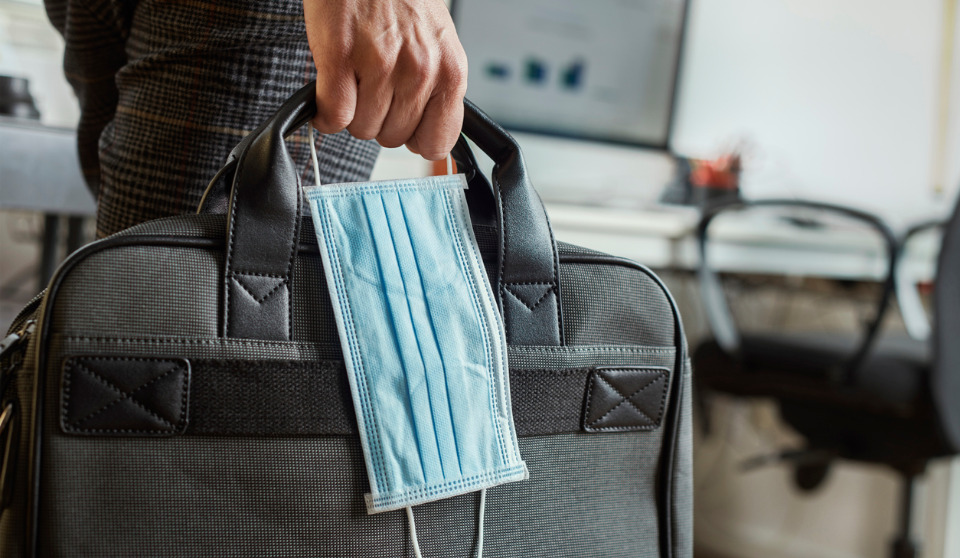Workplaces are facing tough decisions amid the ongoing pandemic. Loretta Bouwmeester of law firm Mathews Dinsdale explains the risky intersection between OHS COVID-19-related reporting and potential WCB claims

Lions, tigers and bears — oh my! That may make you think of a journey on a yellow brick road and ruby slippers. COVID-19 is likewise a journey — but there are no ruby slippers to click three times and go back to where we were. Our journey is also likely to last much longer than Dorothy’s. Conservatively, we are likely to still be dealing with COVID-19 as a potential workplace hazard for another year or more, vaccine or no vaccine. Some parts of the journey are frightening, and all are happening on a twisty road with unknowns around the corner. Part of effectively managing the risk on that twisty road is understanding how reporting a COVID-19 infection for a worker can have both workers’ compensation and occupational health implications.
AHS, OHS, WCB, CMOH, CDC — oh my! Those “initialisms” stand for Alberta Health Services, Occupational Health and Safety, the Workers’ Compensation Board, the Chief Medical Officer of Health and the Centre for Disease Control in Alberta. Each of these bodies typically has counterparts in every province and territory in Canada and at the provincial/territorial and federal jurisdictional levels. As a safety professional working with an employer, it is key to understand who your regulators are, what authority they have over the work that you do and how they intersect with each other. This is especially important as their powers under their respective legislation vary. One body cannot give the other powers or, in effect, “deputize” them. AHS can legitimately ask for broader information from an individual when they are doing contact tracing, such as who that person lives with and how they get to work, than an employer can or should for OHS reporting purposes.
We say “oh my” as you will almost certainly hear from all of these bodies or their counterparts outside of Alberta if you are dealing with an outbreak. Just five cases amounts to an outbreak at a worksite in Alberta, which is not a high threshold on a large worksite. This is particularly true when considering the reality of community transmission and that many people interact with others extensively outside of work. It is possible in theory that an employer could have an outbreak based on numbers, but the infections did not arise in the course of work and are not workplace related.
That leads to the key issue of OHS and WCB reporting. In our experience, both want employers to report every COVID-19 infection as a “near-miss” or incident and as a potential claim. However, the applicable legislation does not support that approach in all instances. As an employer, if you concede to workplace infections when the facts or circumstances do not support that conclusion, you put your organization at risk for OHS regulatory action (including demands for information, orders and even an administrative penalty or prosecution). On the WCB side, if you report the infections as workplace infections when they are not, you unnecessarily risk the cost implications of a claim in some jurisdictions.
In Alberta, WCB has stated that it will not assess COVID-19-related claims individually against the employer but on an industry-wide basis*. Where there is an outbreak, they have also directed an employer to report all positive cases. While premiums may still be negatively affected, the impact will likely be less severe than if they were individually assessed. In Ontario, COVID-19-related claims are also assessed on a “schedule” basis (like industry rating) rather than an individual basis. Nova Scotia is not assessing any COVID-19-related claims costs against the employer or its industry.
If an employer is inconsistent in reporting for OHS and WCB purposes, this creates a real challenge. Stating in a reporting document that a COVID-19-related claim is workplace related for one regulator and not another creates a need to explain, which typically leads to suspicion and could be used as evidence of inconsistent statements for regulatory enforcement purposes. So, before reporting, reflect. Only reflect after first working, in a privacy compliant way, to understand how and where the infection arose. If an employer fails to do so, it puts the organization at unnecessary risk.
*At the time of writing, on Sept 16.
 Loretta Bouwmeester is a partner in Mathews Dinsdale & Clark’s occupational health and safety and workers’ compensation practice in Calgary. She has close to 15 years of experience representing employers in British Columbia, Alberta and the Northwest Territories. She can be reached at (403) 538-5042 or [email protected] or visit www.mathewsdinsdale.com for more information.
Loretta Bouwmeester is a partner in Mathews Dinsdale & Clark’s occupational health and safety and workers’ compensation practice in Calgary. She has close to 15 years of experience representing employers in British Columbia, Alberta and the Northwest Territories. She can be reached at (403) 538-5042 or [email protected] or visit www.mathewsdinsdale.com for more information.
This article originally appeared in the Nov/Dec 2020 issue of COS.






